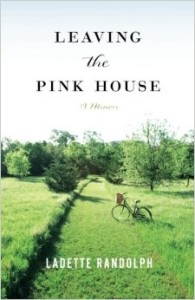 On July 30, my wife and I closed on our first house, ending a search that had taken more than two years in Boston’s red-hot housing market. We looked at close to 100 houses in that time and put offers on at least a dozen. Each time we thought we had found “the one,” we would place an offer of 15 percent or more over asking price, only to be beat out by a buyer who somehow managed to put together an all-cash offer for 25 or 30 percent over asking price. For us, house hunting had become a lot like online dating: photos were always carefully staged and always better than reality, quirks were covered up with cute code words like “cozy” (tiny), “handyman’s dream” (nearly condemned) and “vibrant neighborhood” (situated on the corner of a deadly intersection on a busy street).
On July 30, my wife and I closed on our first house, ending a search that had taken more than two years in Boston’s red-hot housing market. We looked at close to 100 houses in that time and put offers on at least a dozen. Each time we thought we had found “the one,” we would place an offer of 15 percent or more over asking price, only to be beat out by a buyer who somehow managed to put together an all-cash offer for 25 or 30 percent over asking price. For us, house hunting had become a lot like online dating: photos were always carefully staged and always better than reality, quirks were covered up with cute code words like “cozy” (tiny), “handyman’s dream” (nearly condemned) and “vibrant neighborhood” (situated on the corner of a deadly intersection on a busy street).
Randolph and her husband gave themselves a tight deadline of nine months during a period of great national and economic unrest to rebuild their new house while saying goodbye to the Pink House, which had been their cherished family home. In the process, Randolph reconstructs the memories tied to all the other places she has lived, tying moments of joy and sorrow to all of the other places she had called home throughout her life.
So late summer may not have been the best time for me to pick up Ladette Randolph’s Leaving the Pink House (University of Iowa Press, 2014). I read most of the book on a deck—my deck—that I knew would need to be replaced within a few years, next to a backyard prone to flooding and under a rotting soffit, which may or may not have kept bats out of our attic for the balance of the summer, but has certainly failed at keeping out the cold this winter.
It was the wrong time for me to read the book because a lot of Randolph’s book deals with the places we call home and how they define us, and like Randolph, my wife and I found ourselves longing for the place we had just lived. Our pink house was the 600-square-foot condo we had just left. Sure, it was too small to hold the wedding gifts we had received when we were married in October 2013, and even smaller when you consider that most of the time we lived there we shared the condo with a dog and a cat that simply did not like each other. But it was our tiny space, our home. We knew which takeout places were reliable and we knew where the dry cleaner was. It had its own set of maintenance problems, but they seemed less intimidating than the lawn that needed to be mowed every week, the mailbox that left our letters and bills drenched every time it rained and the walls that needed to be painted so we could start to make our new house feel like our new home.
Or it may have been the best time for me to read the book. The mostly cosmetic repairs my wife and I have been chipping away at are minor compared to the undertaking Randolph and her husband did when they closed on a dilapidated house in Nebraska on September 12, 2001. There’s a certain degree of comfort in reading a beautifully-written memoir that confirms the notion “things could be worse.” But beyond that, there is comfort that comes from knowing the emotions and uncertainty that come from moving into a new home are universal. And Randolph’s beautifully-written memoir gives the reader permission and knowledge to realize that reflecting on all of the places you have lived—not just the most recent place you lived—is a normal part of any major move. Literary types tend to focus on character at the expense of place, never fully acknowledging that place has such a major impact on who we are and the lives we lead. Leaving the Pink House is a solid remedy for that tendency.
__
Dave Copeland is the author of Blood & Volume: Inside New York’s Israeli Mafia (Barricade Books, 2007) and a 2006 graduate of Goucher College’s creative nonfiction MFA program. He currently teaches at Bridgewater State University and is working on his second book.
